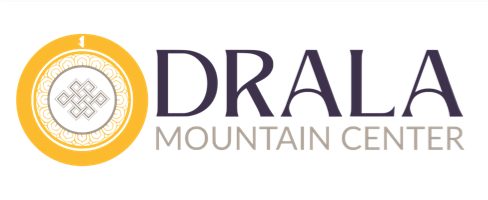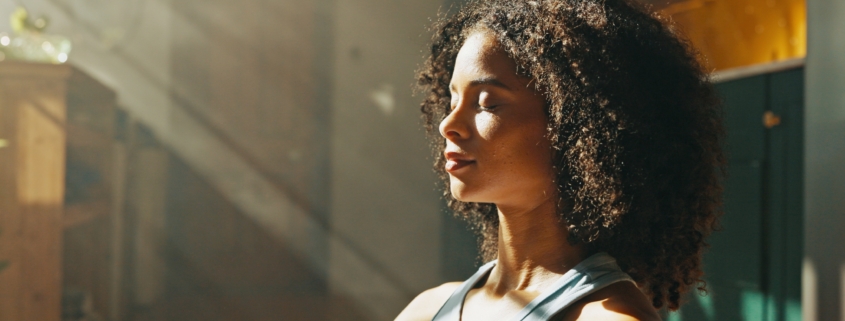You Don’t Have to Be Buddhist to Meditate
By Chihiro Fukami
For a long time, I thought meditation lived in a world that wasn’t meant for me. In my head, it involved floor cushions, incense, and words I couldn’t pronounce. I pictured people who were much calmer than I am—people who knew all about ancient texts and spiritual lineages. Meanwhile I was over here, refreshing my inbox and drinking cold coffee at 3 p.m. It felt like two different universes.
Then I had one of those weeks. You know the kind: three deadlines, a car that makes a new sound, a conversation you keep replaying in your mind like a bad song. I was sitting in my parked car outside the grocery store and realized I couldn’t even remember what I’d come to buy. A friend had once sent me a five-minute breathing exercise, and I pulled it up because five minutes felt like all I could spare.
It was awkward. My mind was not interested in cooperating. But I noticed something strange: for a few breaths at a time, my shoulders dropped. When the person guiding the practice said, “Notice what you feel without needing to fix it,” I felt this tiny bit of relief. Nobody was asking me to believe anything. I didn’t have to empty my mind or figure out life. I just had to notice that my heart was racing, and that the steering wheel under my fingers felt cool and solid. Five minutes later, I was still me—still a person with a to-do list—but I was less hijacked by it.
That little car meditation became a crack in the wall of my skepticism. And the more I explored, the more I realized a simple truth: meditation isn’t a belief system. It’s a human skill. It belongs to anyone with a nervous system and a busy mind.
It’s also true that many meditation techniques come from Buddhism and other spiritual traditions. That history is real and deserves respect. For many Buddhists, meditation isn’t just stress relief—it’s part of an ethical and philosophical path. You don’t have to ignore any of that to appreciate meditation’s benefits in everyday life. Just like you don’t need to be a musician to enjoy listening to a symphony, you can benefit from these practices whether or not you’re drawn to the religious framing.
So what is meditation, without the mystique? It’s training your attention. It’s practicing how to notice what’s here—breath, sounds, sensations, thoughts—and relating to it with a bit more steadiness and kindness. That might sound small, but it’s not. When you can see a thought as a thought, you don’t have to get dragged behind it like a water-skier. When you can feel a breath on a difficult day, you get a moment of spaciousness where you can choose your next move instead of reacting on autopilot.
There’s a growing body of research suggesting that practicing regularly can reduce stress, improve focus, and support emotional regulation. But you don’t need a journal article to test this. Try pausing for even 60 seconds, noticing your breath move in and out, and see how it feels. The benefit is not perfection—it’s a little more room inside your own life.
If the word “meditation” still sounds intimidating, know this: you don’t have to sit cross-legged or light a candle. You can sit in a chair, lie down, or take a slow walk around the block. Some approachable options:
- Breath awareness: Feel the breath in your belly or at your nostrils. When your mind wanders—and it will—gently bring it back. That return is the practice.
- Body scan: Move your attention through the body, part by part. Notice warmth, coolness, pressure, tingling. No need to change anything.
- Walking meditation: Walk at a natural pace, feeling your feet make contact with the ground. When thoughts take over, come back to the sensations of walking.
- Sound meditation: Let your anchor be whatever you hear—distant traffic, birds, the hum of a refrigerator—letting sounds come and go without chasing them.
A few common hang-ups I had (maybe you do too):
- “I can’t empty my mind.” Good news: you don’t have to. Minds think. The practice is noticing that thinking is happening, and returning to your anchor. If you return a hundred times, that’s a hundred reps.
- “I tried and got bored.” Boredom is a sensation like any other. If you can notice what boredom feels like—restlessness, heaviness, a story that says “this should be more interesting”—you’re already meditating.
- “I can’t sit still.” Try walking. Or try shorter sits—two or three minutes counts. You’re not failing if your foot falls asleep. Adjust and keep going.
- “I fell asleep.” Then you needed rest. Maybe try a different time of day or sit upright. This is not a test you pass or fail.
If you’re religious, meditation can be a way to connect with your values—compassion, patience, presence—in a practical, embodied way. If you’re not religious, it can be mental hygiene: like flossing, but for your attention. If you’re Buddhist, you already know there are layers upon layers to these practices; people like me, approaching from a secular angle, are simply discovering one layer that’s universally helpful.
One afternoon, months after that grocery store moment, I was in a tense meeting. I felt my jaw tighten, the urge to jump in and defend myself. That tiny bit of training kicked in. I felt one breath. I replied half a beat slower. The conversation shifted from combative to collaborative. It wasn’t magical. It was human. And it was enough to change the tone of the day.
You don’t have to become a different person to meditate. You don’t have to join anything, believe anything, or buy special gear. You can honor where these practices come from and still make them your own. All you need is a few moments and the willingness to be with your real, messy life as it is.
If meditation has a secret, it’s this: it’s less about escaping and more about arriving. Not somewhere exotic—right here, in this breath, in this body, in this moment. And that’s available to everyone. Including you.

